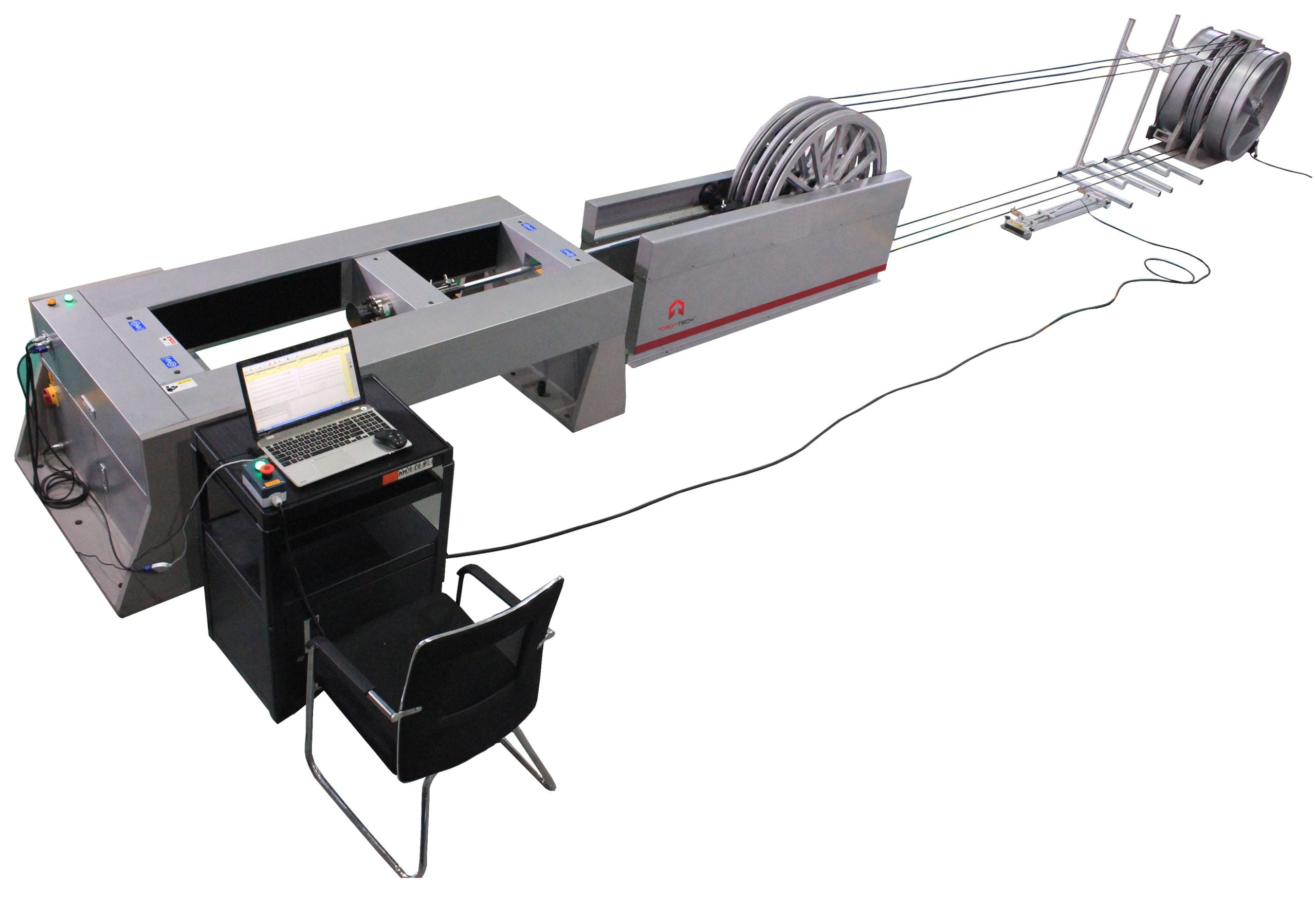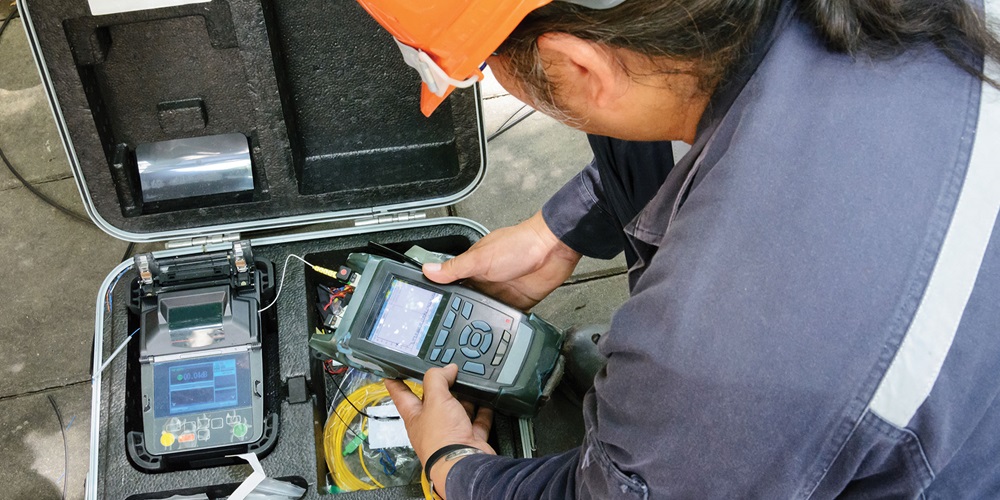The latest optical fibre testing equipment streamlines troubleshooting and diagnostics in telecommunications.
The latest optical fibre testing equipment streamlines troubleshooting and diagnostics in telecommunications.
Blog Article
Revealing the Trick Utilizes of Optical Fiber Checking for Reliable Data Transmission
In the realm of modern-day interaction, optical fibre testing arises as a crucial practice for enhancing data transmission. By employing methods such as Optical Time Domain Reflectometry (OTDR) and insertion loss assessments, network drivers can effectively determine and deal with concerns that may endanger signal honesty. As the demand for faster and a lot more trustworthy links remains to rise, the ramifications of these screening techniques expand beyond instant mistake detection, influencing long-lasting network efficiency. Understanding the diverse applications of optical fibre testing invites a deeper expedition right into its essential role fit the future of information interaction.

Relevance of Optical Fibre Screening
The value of optical fibre screening can not be overemphasized, as it acts as a vital component in making sure the integrity and effectiveness of data transmission systems. In a period where high-speed interaction is paramount, any shortages in fiber optics can cause considerable data loss and lowered performance. Consequently, strenuous testing protocols are essential to validate the integrity and efficiency of optical cords.
Testing permits the recognition of issues such as micro-bends, macrobends, and splice losses that could impede signal quality. It supplies insights into the general attenuation and data transfer abilities of the fibre, making sure that the network satisfies details operational standards. Routine screening not just enhances system performance but likewise extends the lifespan of the framework by identifying potential issues prior to they escalate right into pricey failures.

Kinds Of Optical Fiber Tests
Different sorts of optical fiber examinations are carried out to make certain the efficiency and integrity of fibre optic networks. These tests can be classified into a number of essential types, each offering a specific function in evaluating the integrity of the fiber.
First, Optical Time Domain Reflectometry (OTDR) is a famous examination that determines mistakes, splices, and ports within the fiber. By sending pulses of light and assessing the reflected signals, technicians can identify concerns along the fiber's length.
Second, insertion loss tests review the quantity of signal loss when light travel through ports or splices, which is important for keeping network performance.
Third, return loss tests gauge the amount of light showed back in the direction of the resource, giving understandings right into the high quality of connections and potential resources of disturbance.
In addition, connection tests ensure that the fiber path is complete, allowing technicians to validate that the fiber is undamaged without any you can find out more type of breaks. ofda.
Finally, visual fault locators utilize visible light to identify breaks or serious bends in the fibre, assisting in quick troubleshooting. Collectively, these tests form a detailed technique to maintaining optimum performance in fibre optic networks.

Applications in Network Upkeep
In modern telecoms, efficient network upkeep counts heavily on optical fiber testing to recognize and remedy concerns quickly. Routine testing makes certain that the network runs at optimal performance degrees, reducing downtime and boosting user experience.
Among the main applications of optical fibre testing in maintenance is the detection of mistakes, such as breaks, bends, or incorrect connections. Techniques like Optical Time Domain Name Reflectometry (OTDR) allow specialists to find these concerns accurately and assess the high quality of the fiber web link. Furthermore, loss screening confirms the honesty of the optical path, guaranteeing that signal attenuation continues to be within appropriate restrictions.
Routine maintenance testing additionally assists in safety nets, identifying potential problems before they intensify right into substantial failures. This proactive strategy can save organizations both time and funds. Moreover, during upgrades or growths, optical fiber screening ensures that brand-new setups incorporate seamlessly with existing framework.
Enhancing Data Transmission Reliability
Effective network upkeep through optical fibre testing not just addresses prompt issues however also plays a significant role in enhancing data transmission integrity. By recognizing faults, measuring signal loss, and evaluating the overall condition of fibre optic wires, screening guarantees that prospective issues are fixed before they intensify right into substantial interruptions.
Routine optical fibre testing, such as time-domain reflectometry (TDR) and optical time-domain reflectometry (OTDR), enables service technicians to determine the exact areas of breaks, bends, or adapter problems within the network. This positive technique not only decreases downtime sites yet likewise maximizes the efficiency of information transmission by making certain that the pathways for signals are clear and functioning efficiently.
Moreover, testing aids in verifying adherence to market criteria and specifications, which is critical for keeping the stability of data circulation. By ensuring that each connection satisfies needed limits for loss and high quality, organizations can boost their confidence in the reliability of their data networks.
Inevitably, buying extensive optical fiber testing not only enhances data transmission integrity yet additionally supports the lasting functional efficiency of communication frameworks.
Future Fads in Fibre Testing
Emerging modern technologies are positioned to change fibre screening, leading the way for improved effectiveness and precision in information transmission diagnostics (optical fibre diameter analyser). As the need for faster internet and greater transmission capacity proceeds to increase, the combination of innovative tools such as artificial intelligence (AI) and device knowing (ML) is set to transform traditional fiber screening methods. These innovations will certainly enable anticipating upkeep and automated fault discovery, considerably decreasing downtime and enhancing network dependability
Additionally, the adoption of Web of Things (IoT) gadgets will certainly facilitate real-time monitoring of fiber networks, permitting immediate identification of performance issues. This change towards positive administration will minimize interruptions and optimize information circulation.
Moreover, advancements in optical time-domain reflectometry (OTDR) and brand-new screening standards will certainly improve the precision of measurements, ensuring that data stability is kept throughout the transmission process. The advent of 5G technology likewise demands the development of more advanced fiber testing strategies to support its high-speed demands.
Conclusion
Finally, optical fibre screening is crucial for preserving efficient information transmission within interaction networks. By employing different screening strategies, such as OTDR company website and insertion loss examinations, potential faults can be identified and rectified, consequently boosting signal clearness and minimizing downtime. Normal testing not just guarantees compliance with industry requirements but additionally facilitates aggressive maintenance, inevitably adding to the long-lasting integrity and performance of fibre optic systems. The ongoing development of screening methodologies will further reinforce these capacities in the future.
Report this page